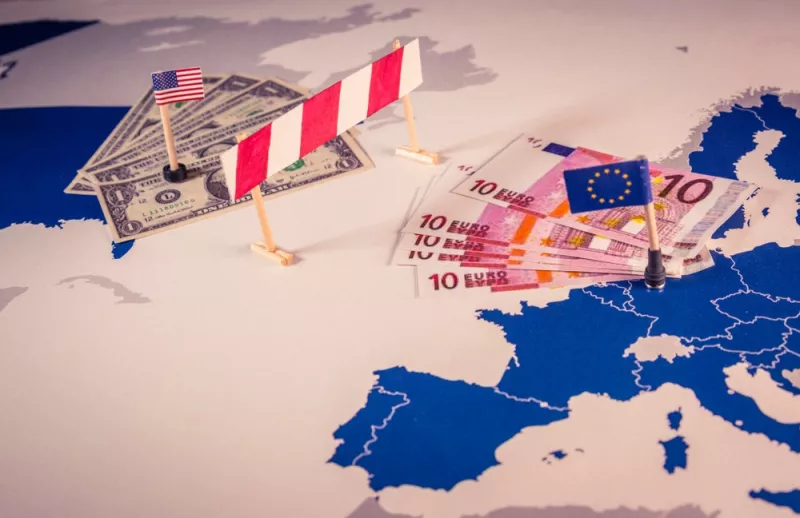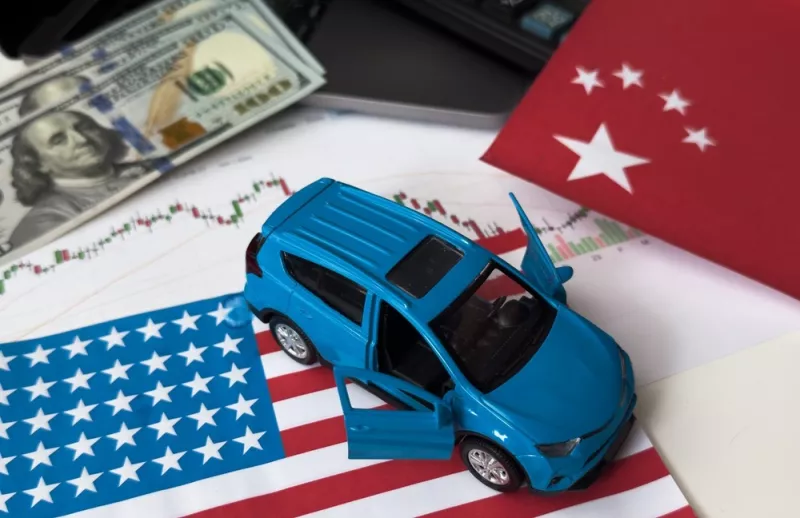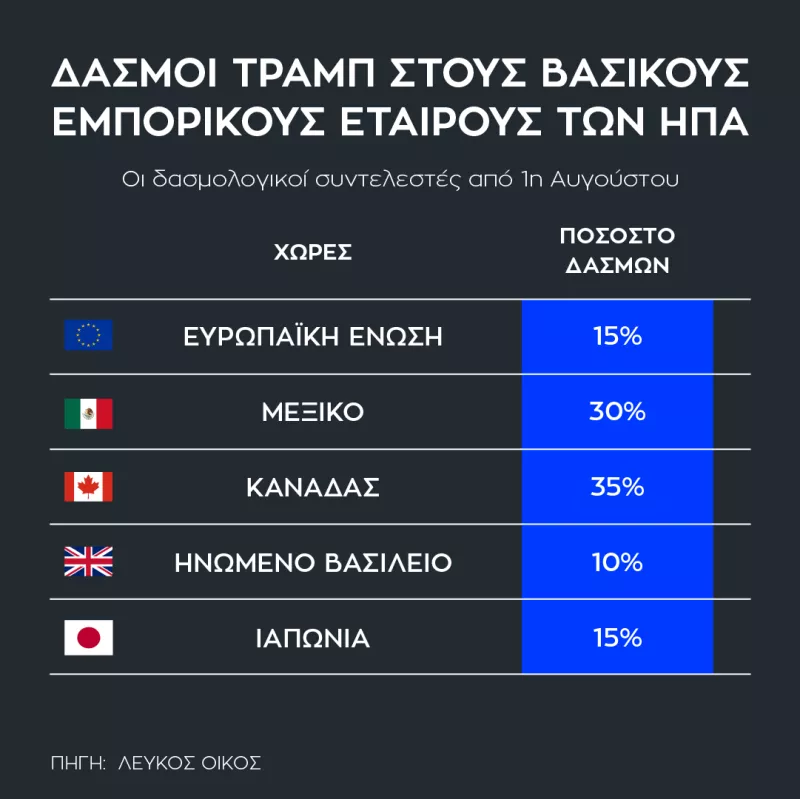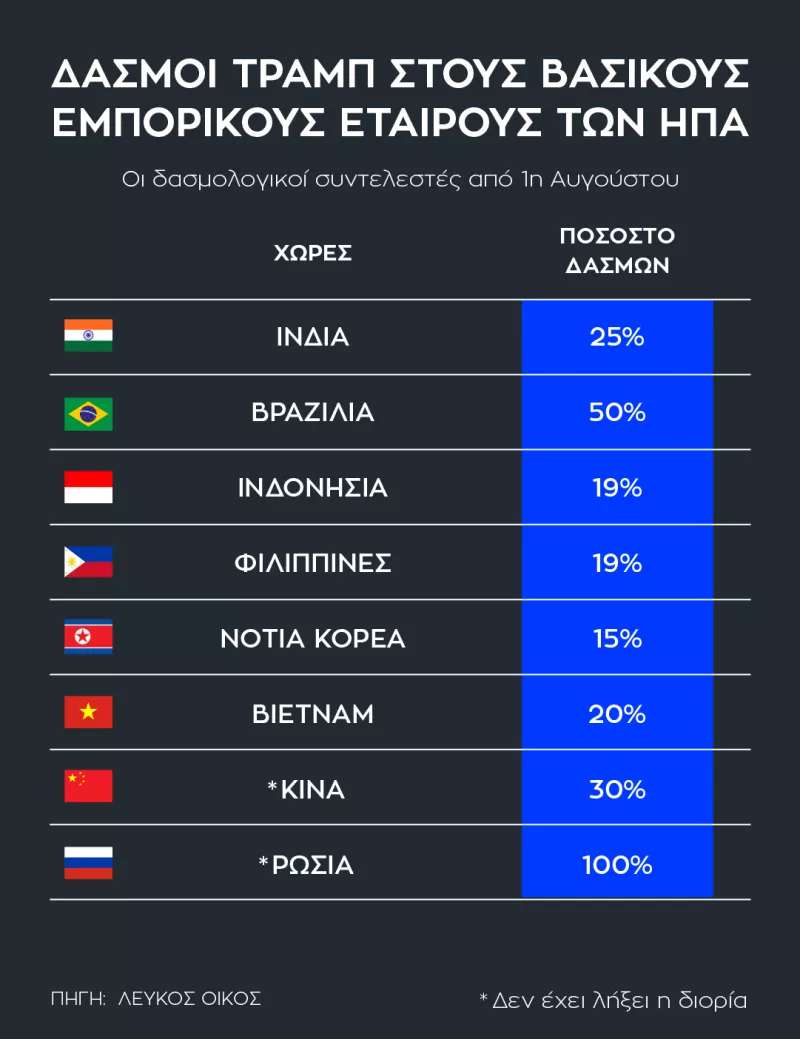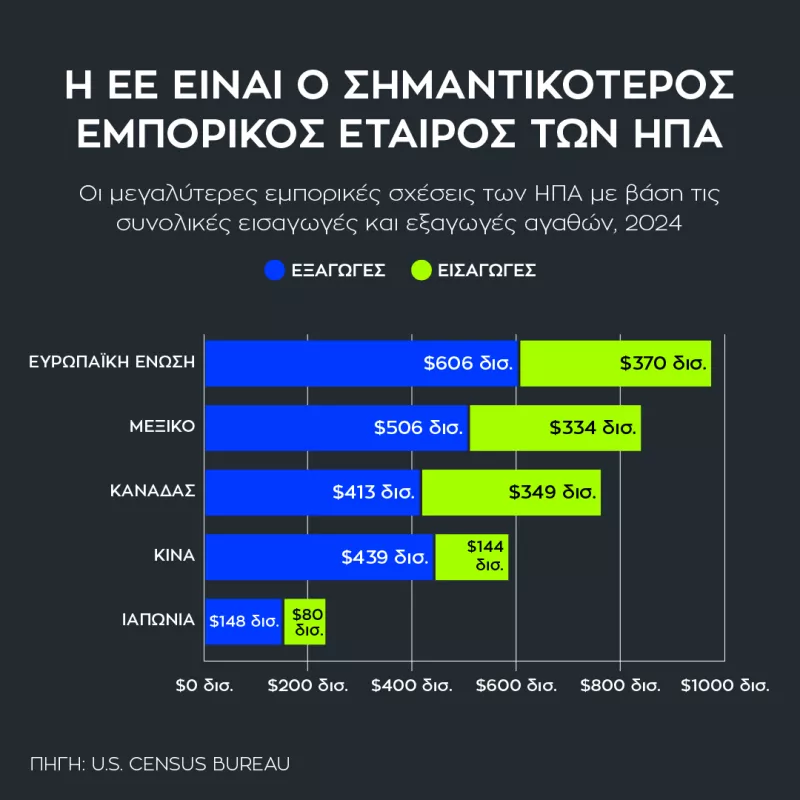By Vasilis Kaltsas
After months of negotiations and constant stance changes by US President Donald Trump, the pivotal date of August 1 has arrived.
With open issues remaining in discussion tableFrom today there are a number of duties in the majority of the countries on the planet.
As it is a first topic of discussion across the whole world and especially in business and marketswe must keep in mind that global exports to the US account for 13% of the total. Percentage clearly not negligible, but not particularly capable of hurting the worldwide development.
This is at least appreciated by the IMF, which, with its updated forecast, raises the rate of global growth this year to 3%.
As in any war, even if it is commercial, there are winners and losers.
At least at first glance, because US trade agreements tend to change in a blink of an eye.
The winners
If we want to distinguish someone as a winner, undoubtedly the Trump It seems at first sight to be the big winner for two reasons.
Initially, because the US president almost managed to get through what he wanted. So in the big picture, America seems to be winning because it proves once again who is the “boss”.
But leaving the seem, the first evidence shows that the US economy was developed in the second quarter of the year, despite the tense commercial environment.
On the other hand, however, many US companies are talking about price increases to face the upcoming costs, while inflation has already pinched in June.
Clearly, more writing samples will have the next quarters when the impact of the duties will be better imprinted.
From the winners camp could not miss the traditional ally Britain. In an expression process he has long been aware that the trading deal closed at 10%, the lowest duties percentage of Donald Trump distributed.
The winners include Pakistan after Islamabad’s announcement that he will have lower duties in his exports, while Donald Trump has stated that this is an agreement that would help develop the country’s oil reserves.
South Korea is also pleased to be satisfied, after reaching an agreement at 15% from 25% previously.
The losers
Starting from our parts, the European Union took an agreement of “not optimal”. Between the original 10% and the threatened 20%, the deal closed at 15% for most goods, with the exception of 50% for steel and aluminum and part of copper products.
Countries such as Germany and the France They seem to be overwhelmed by Trump duties, with the two states demanding more favorable duties for cars and alcoholic beverages.
For Greece, the blow seems to be short in the short run due to the not -so -large trade relationship with the US. We need to see in the midst of a term, whether duties that will hit larger economies will result in a reduction in the available income that could in the second phase affect tourism to some extent.
The camp of the “losers” and the Trump’s lost duties are Brazil, which was imposed on her 50% tariff rate with some exceptions, as Canada with 35% duties and India with 25%.
In the biggest losers, although not a country but it has a total capitalization exceeding the GDP of many large states, it is the automotive industry, which seems to be the biggest blow after the recent announcements of a few companies, which warn of many billions.
Companies such as Volkswagen, Stelandes, Mercedes and Porsche have already warned that they will suffer a significant blow to their profits.
But also the industry More generally it will be hit after increasing forests from 25% to 50% in aluminum and steel.
The question marks
But there are also question marks. The two biggest are China and Russia.
Trade negotiations with China are currently undergoing a deadline on August 12th. May preliminary agreement provided for duties 30% from 145% to China and 10% from 125% for the USA.
President Trump, however, has threatened that this percentage will increase if a final agreement is not reached by August 12, and recently warned 100% duties in countries working with Russia (including China and India).
On Thursday, Finance Minister Scott Bessed expressed the belief that the US and China are on track to a trade agreement.
In terms of RussiaTrump threatened Moscow with 100% duties in mid -July if the war in Ukraine is not finished within 50 days.
After a few days, the deadline has changed, which is now expiring at the end of next week, but did not appear to have motivated Russia towards the goal of reaching a peacekeeping agreement.
Meanwhile, at the last minute, Donald Trump announced a 90 -day extension for the existing trade agreement with Mexico.
Mexico will continue to pay a 25% duty on Fentanyl, a 25% duty on cars and a 50% duty on steel, aluminum and copper.
Duties expected to be in force today, August 1st to major US trade partners
*A 90 -day extension for the existing trade agreement with Mexico, Donald Trump announced on Thursday.
US largest commercial partners
Source: Skai
I am Janice Wiggins, and I am an author at News Bulletin 247, and I mostly cover economy news. I have a lot of experience in this field, and I know how to get the information that people need. I am a very reliable source, and I always make sure that my readers can trust me.


